I have built what I thought is a simple first stage for a power supply consisting of only the full wave bridge rectifier (made up of individual 3A SMD diodes) and bulk capacitance.
The moment I apply power through the transformer my diodes blow. I've checked that I haven't installed any diodes back to front. The transformer can output a maximum of 4.81A but I apply power to the circuit with no load. I'm not planning to exceed the 3A limit in my final solution.
The basic schematic for the circuit is as follows.

What on earth could be the problem? Is this caused by the initial charging of the capacitors? I've checked that the board also has no short circuits between the positive and the ground rails.
Update
two circuits with same results:
Circuit 1 - total capacitance: 6580µF (made up of 14 470µF electrolytic through hole capacitors in parallel)
Circuit 2 - total capacitance: 2820µF (made up of 6 470µF electrolytic through hole capacitors in parallel)
8 diodes making up two full wave bridge rectifiers are B340LA SMD 3A diodes each (http://www.farnell.com/datasheets/639175.pdf)
All of the above fed with a single toroidal transformer with two secondary windings of 18V/80VA each. Single secondary winding tested in each case with both having the same result (fire coming out of the diodes which are then failed short circuit).